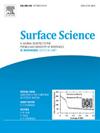晚期过渡金属表面上吸附物形成反应的实验能量:数据库更新
IF 1.8
4区 化学
Q3 CHEMISTRY, PHYSICAL
引用次数: 0
摘要
含H、C、O、N和I的吸附剂在非均相催化反应中作为中间体和/或溶剂,通过各种方法,包括程序升温解吸(TPD)、脉冲分子束(PMB)表面停留时间测量和单晶吸附量热法(SCAC),在清洁和定义良好的单晶表面上精确测量了它们的能量。2016年,Silbaugh和Campbell1发表了大量的实验吸附能,这些实验吸附能被认为是特别可靠的,基于其他小组的可重复性,与密切相关系统的结果进行比较,以及/或同一小组报告的其他结果的可靠性。该数据库包括在许多不同的金属单晶表面上测量的81种分子和解离吸附反应的焓和能量,以及由此产生的吸附物的标准形成焓。在本文中,我们根据我们自己的小组最近的测量结果,在5种不同的晚期过渡金属(Pt, Pd, Ni, Cu和Au)的7种不同的金属单晶面上测量了另外26种分子和解离吸附反应的焓和能量。我们还将由此产生的26种吸附剂的标准生成热制成表格。总的来说,这些数据库提供了107个基准能量,用于验证用于估计表面反应能和建立催化反应微动力学模型的计算方法的能量准确性。本文章由计算机程序翻译,如有差异,请以英文原文为准。

Experimental energies of formation reactions for adsorbates on late transition metal surfaces: A database update
The energies of adsorbates containing H, C, O, N and I, that are of interest as intermediates and/or solvents in heterogeneous catalytic reactions have been measured accurately on clean and well-defined single crystal surfaces by a variety of methods, including temperature programmed desorption (TPD), pulsed molecular beam (PMB) surface residence time measurements, and singe crystal adsorption calorimetry (SCAC). In 2016, Silbaugh and Campbell1 published a large collection of those experimental adsorption energies which were consider to be particularly reliable based on reproducibility by other groups, comparisons to results for closely related systems, and/or reliability of other results reported by the same group. That database included the enthalpies and energies of 81 molecular and dissociative adsorption reactions that were measured on many different metal single crystal surfaces, as well as the standard enthalpies of formation of the adsorbates thus produced. In this paper, we tabulate the enthalpies and energies of an additional set of 26 molecular and dissociative adsorption reactions that were measured on 7 different metal single crystal faces of 5 different late transition metals (Pt, Pd, Ni, Cu and Au), based on more recent measurements from our own groups. We also tabulate the standard heats of formation of the 26 adsorbates thus produced. Taken together, these databases provide 107 benchmark energies for validating the energy accuracies of computational methods used for estimating surface reaction energies and building microkinetic models of catalytic reactions.
求助全文
通过发布文献求助,成功后即可免费获取论文全文。
去求助
来源期刊

Surface Science
化学-物理:凝聚态物理
CiteScore
3.30
自引率
5.30%
发文量
137
审稿时长
25 days
期刊介绍:
Surface Science is devoted to elucidating the fundamental aspects of chemistry and physics occurring at a wide range of surfaces and interfaces and to disseminating this knowledge fast. The journal welcomes a broad spectrum of topics, including but not limited to:
• model systems (e.g. in Ultra High Vacuum) under well-controlled reactive conditions
• nanoscale science and engineering, including manipulation of matter at the atomic/molecular scale and assembly phenomena
• reactivity of surfaces as related to various applied areas including heterogeneous catalysis, chemistry at electrified interfaces, and semiconductors functionalization
• phenomena at interfaces relevant to energy storage and conversion, and fuels production and utilization
• surface reactivity for environmental protection and pollution remediation
• interactions at surfaces of soft matter, including polymers and biomaterials.
Both experimental and theoretical work, including modeling, is within the scope of the journal. Work published in Surface Science reaches a wide readership, from chemistry and physics to biology and materials science and engineering, providing an excellent forum for cross-fertilization of ideas and broad dissemination of scientific discoveries.
 求助内容:
求助内容: 应助结果提醒方式:
应助结果提醒方式:


